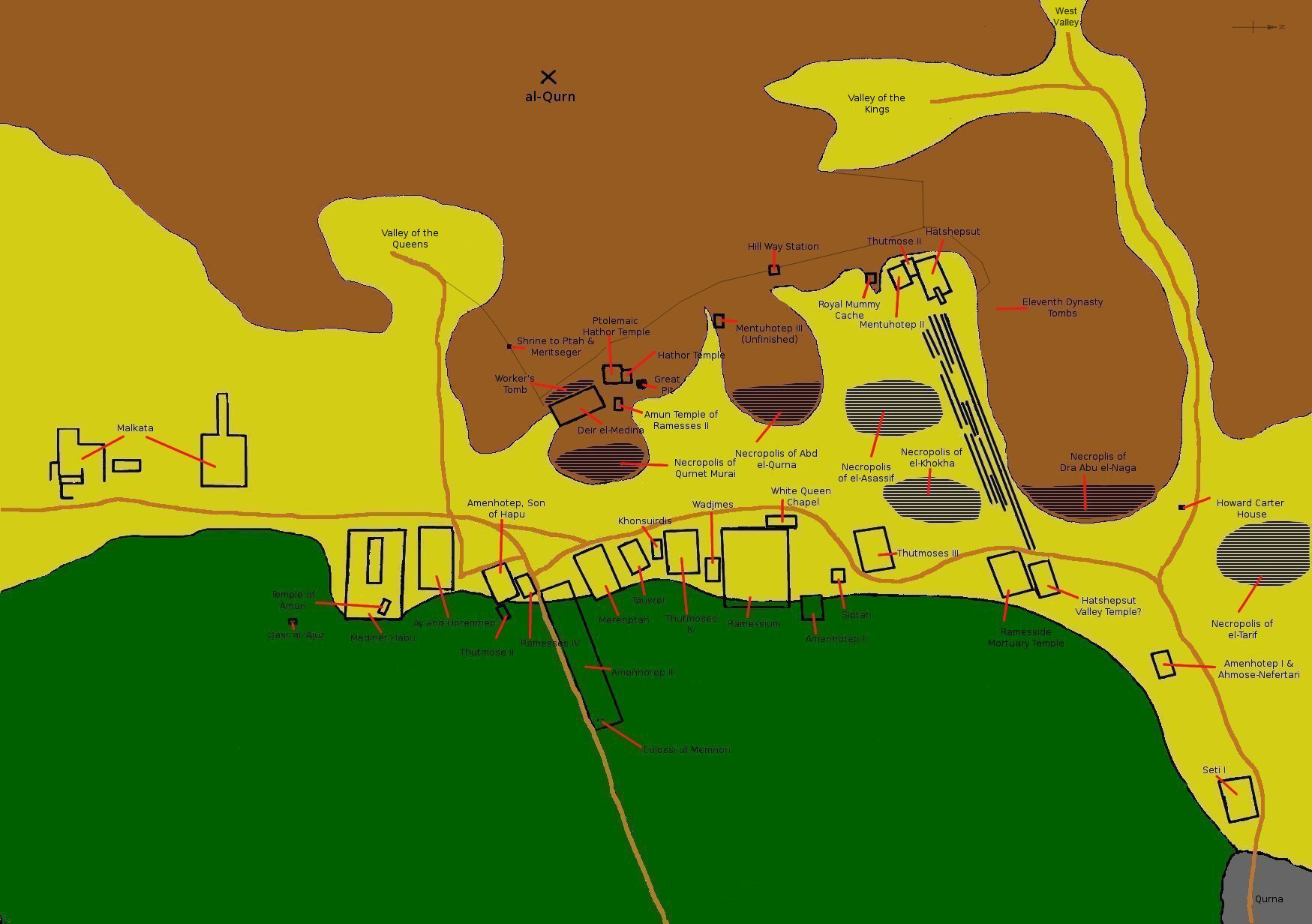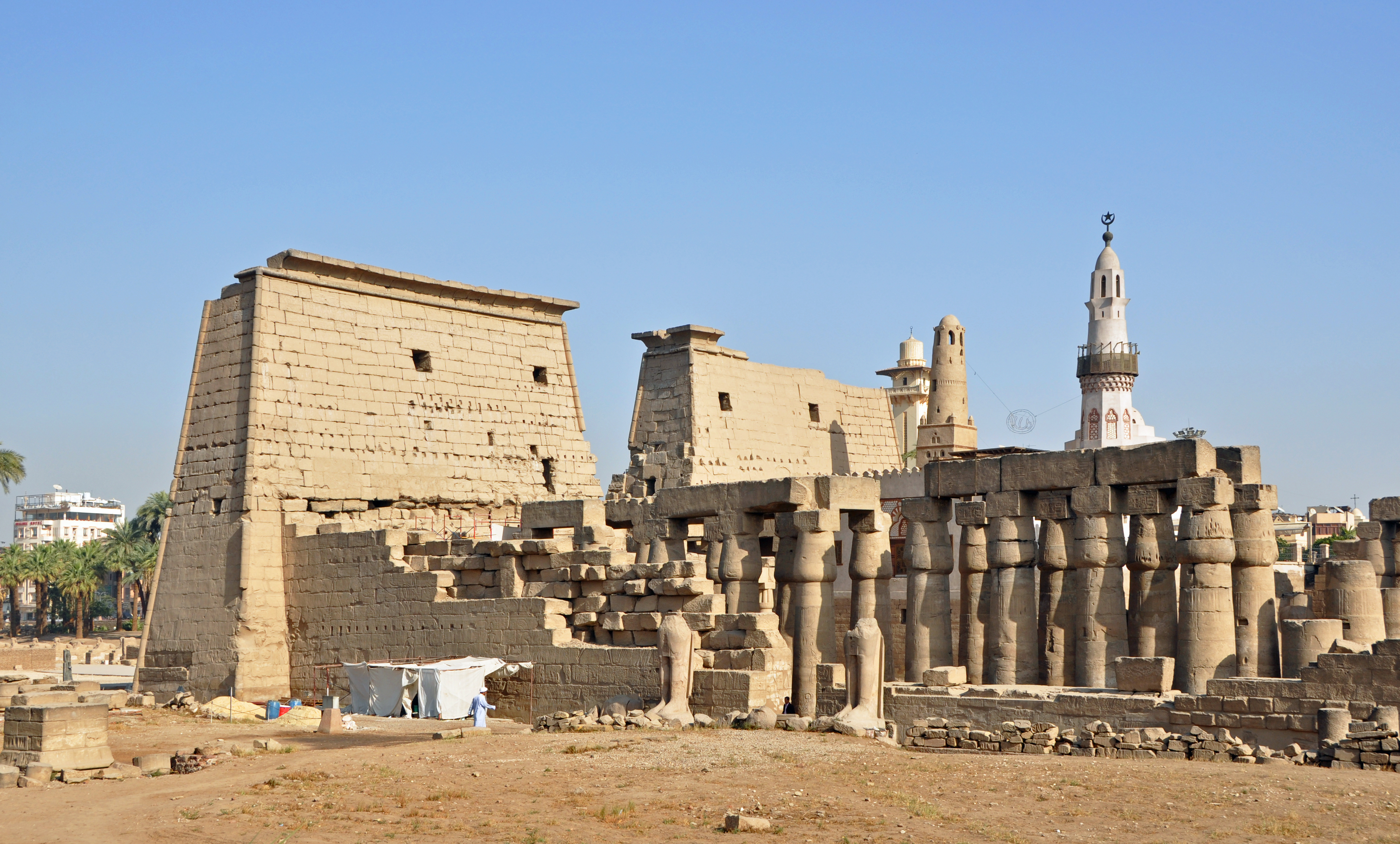|
TT308
The Thebes, Egypt, Theban List of Theban Tombs, Tomb known as TT308 is located in Deir el-Bahari. It forms part of the Theban Necropolis, situated on the west bank of the Nile opposite Luxor. The tomb is the burial place of the Ancient Egyptian Kemsit, who was King's Beloved Wife, King's Ornament, King's Sole Ornament, Priestess of Hathor during the reign of Mentuhotep II, in the Eleventh dynasty of Egypt, 11th dynasty. See also * List of Theban tombs References {{reflist Theban tombs ... [...More Info...] [...Related Items...] OR: [Wikipedia] [Google] [Baidu] |
Kemsit
Kemsit was an ancient Egyptian queen consort, the wife of pharaoh Mentuhotep II of the 11th Dynasty. Her tomb (TT308) and small decorated chapel were found in her husband's Deir el-Bahari temple complex, behind the main building, along with the tombs of five other ladies, Ashayet, Henhenet, Kawit, Sadeh and Mayet. Most of them were priestesses of Hathor, so it is possible that they were buried there as part of the goddess's cult, but it is also possible that they were the daughters of nobles the king wanted to keep an eye upon. Only parts of her sarcophagus have been found, these are now in the Egyptian Museum in Cairo. The queen was also depicted on reliefs in the funerary temple of her husband Mentuhotep II. These depictions are today heavily destroyed, but it seems that she appeared in a scene showing a row of royal women. On the preserved fragments she is shown behind queen Kawit. Her title in the depiction is ''King's Beloved Wife''. Her titles were: King's Beloved Wife ' ... [...More Info...] [...Related Items...] OR: [Wikipedia] [Google] [Baidu] |
List Of Theban Tombs
The Theban Necropolis is located on the west bank of the Nile, opposite Luxor, in Egypt. As well as the more famous royal tombs located in the Valley of the Kings and the Valley of the Queens, there are numerous other tombs, more commonly referred to as Tombs of the Nobles (Luxor), the burial places of some of the powerful courtiers and persons of the ancient city. There are at least 415 cataloged tombs, designated TT for Theban Tomb. There are other tombs whose position has been lost, or for some other reason do not conform to this classification. See for instance the List of MMA Tombs. Theban tombs tended to have clay funerary cones placed over the entrance of the tomb chapels. During the New Kingdom they were inscribed with the title and name of the tomb owner, sometimes with short prayers. Of the 400 recorded sets of cones, only about 80 come from cataloged tombs. The numbering system was first published Arthur Weigall's 1908 ''Report on the Tombs of Shêkh Abd’ el Gûrneh ... [...More Info...] [...Related Items...] OR: [Wikipedia] [Google] [Baidu] |
List Of Theban Tombs
The Theban Necropolis is located on the west bank of the Nile, opposite Luxor, in Egypt. As well as the more famous royal tombs located in the Valley of the Kings and the Valley of the Queens, there are numerous other tombs, more commonly referred to as Tombs of the Nobles (Luxor), the burial places of some of the powerful courtiers and persons of the ancient city. There are at least 415 cataloged tombs, designated TT for Theban Tomb. There are other tombs whose position has been lost, or for some other reason do not conform to this classification. See for instance the List of MMA Tombs. Theban tombs tended to have clay funerary cones placed over the entrance of the tomb chapels. During the New Kingdom they were inscribed with the title and name of the tomb owner, sometimes with short prayers. Of the 400 recorded sets of cones, only about 80 come from cataloged tombs. The numbering system was first published Arthur Weigall's 1908 ''Report on the Tombs of Shêkh Abd’ el Gûrneh ... [...More Info...] [...Related Items...] OR: [Wikipedia] [Google] [Baidu] |
Deir El-Bahari
Deir el-Bahari or Dayr al-Bahri ( ar, الدير البحري, al-Dayr al-Baḥrī, the Monastery of the North) is a complex of mortuary temples and tombs located on the west bank of the Nile, opposite the city of Luxor, Egypt. This is a part of the Theban Necropolis. The first monument built at the site was the mortuary temple of Mentuhotep II of the Eleventh Dynasty. It was constructed during the 21st century BC. During the Eighteenth Dynasty, Amenhotep I and Hatshepsut also built extensively at the site. Mortuary temple of Nebhepetre Mentuhotep Mentuhotep II, the Eleventh Dynasty king who reunited Egypt at the beginning of the Middle Kingdom, built a very unusual funerary complex. His mortuary temple was built on several levels in the great bay at Deir el-Bahari. It was approached by a 16-metre-wide (50-ft) causeway leading from a valley temple which no longer exists. The mortuary temple itself consists of a forecourt and entrance gate, enclosed by walls on three sides, a ... [...More Info...] [...Related Items...] OR: [Wikipedia] [Google] [Baidu] |
Thebes, Egypt
, image = Decorated pillars of the temple at Karnac, Thebes, Egypt. Co Wellcome V0049316.jpg , alt = , caption = Pillars of the Great Hypostyle Hall, in ''The Holy Land, Syria, Idumea, Arabia, Egypt, and Nubia'' , map_type = Egypt , map_alt = , map_size = , relief = yes , coordinates = , location = Luxor, Luxor Governorate, Egypt , region = Upper Egypt , type = Settlement , part_of = , length = , width = , area = , height = , builder = , material = , built = , abandoned = , epochs = , cultures = , dependency_of = , occupants = , event = , excavations = , archaeologists = , condition = , ownership = , management = , public_access = , website = , notes = , designation1 = WHS , designation1_offname = Ancient Th ... [...More Info...] [...Related Items...] OR: [Wikipedia] [Google] [Baidu] |
Theban Necropolis
The Theban Necropolis is a necropolis on the west bank of the Nile, opposite Thebes (Luxor) in Upper Egypt. It was used for ritual burials for much of the Pharaonic period, especially during the New Kingdom. Mortuary temples * Deir el-Bahri ** Mortuary temple of Hatshepsut ** Mortuary temple of Mentuhotep II ** Mortuary temple of Thutmose III * Medinet Habu ** Mortuary temple and palace of Ramesses III ** Mortuary Temple of Ay & Horemheb * Mortuary Temple of Amenhotep III ** Colossi of Memnon * Mortuary Temple of Merneptah * Mortuary Temple of Ramesses IV * Mortuary Temple of Thutmose IV * Mortuary Temple of Thutmose III * Mortuary Temple of Twosret * Temple of Nebwenenef * Qurna ** Mortuary Temple of Seti I * Mortuary Temple of Amenhotep II * Ramesseum (Mortuary Temple of Ramesses II) Royal Necropolis * Valley of the Kings (Modern: "''Wadi el-Muluk''") * Valley of the Queens (Modern: "''Biban el-Harim''") * Royal Cache * Bab el-Gasus Necropolis * Deir el-Medin ... [...More Info...] [...Related Items...] OR: [Wikipedia] [Google] [Baidu] |
Nile
The Nile, , Bohairic , lg, Kiira , Nobiin language, Nobiin: Áman Dawū is a major north-flowing river in northeastern Africa. It flows into the Mediterranean Sea. The Nile is the longest river in Africa and has historically been considered the List of rivers by length, longest river in the world, though this has been contested by research suggesting that the Amazon River is slightly longer.Amazon Longer Than Nile River, Scientists Say Of the world's major rivers, the Nile is one of the smallest, as measured by annual flow in cubic metres of water. About long, its drainage basin covers eleven countries: the Democratic Republic of the Congo, Tanzania, Burundi, Rwanda, Uganda, Kenya, Ethiopia, Erit ... [...More Info...] [...Related Items...] OR: [Wikipedia] [Google] [Baidu] |
Luxor
Luxor ( ar, الأقصر, al-ʾuqṣur, lit=the palaces) is a modern city in Upper (southern) Egypt which includes the site of the Ancient Egyptian city of ''Thebes''. Luxor has frequently been characterized as the "world's greatest open-air museum", as the ruins of the Egyptian temple complexes at Karnak and Luxor stand within the modern city. Immediately opposite, across the River Nile, lie the monuments, temples and tombs of the west bank Theban Necropolis, which includes the Valley of the Kings and Valley of the Queens. Thousands of tourists from all around the world arrive annually to visit Luxor's monuments, contributing greatly to the economy of the modern city. The population of Luxor is 422,407 (2021), with an area of approximately . It is the capital of Luxor Governorate. It is among the oldest inhabited cities in the world. Etymology The name ''Luxor'' ( ar, الأقصر, al-ʾuqṣur, lit=the palace, pronounced , , Upper Egyptian: ) derives from the Arabic ... [...More Info...] [...Related Items...] OR: [Wikipedia] [Google] [Baidu] |
Priestess Of Hathor
Priestess of Hathor or Prophetess of Hathor was the title of the Priestess of the goddess Hathor in the Temple of Dendera in Ancient Egypt. Title The title is known to be given during the Old Kingdom of Egypt, and was at that point very powerful and prestigious. The mummies of the priestesses testify that they were decorated with a religious tattoo, covering the stomach around the area of the uterus. After the Middle Kingdom of Egypt, the title was often irregularly awarded the women of the royal family, typically princesses. History The rise, fall and extinction of the priestesses of Hathor are seen in ancient Egyptian culture. The women who wanted to become socially powerful usually took refuge in religion and took the charge of priesthood. Ancient Egyptian society took women's empowerment much more loosely than ancient Greece and ancient Rome. There women were given the right to their own property. However, after becoming a priestess, a woman is seen not only as an importan ... [...More Info...] [...Related Items...] OR: [Wikipedia] [Google] [Baidu] |
Mentuhotep II
Mentuhotep II ( egy, Mn- ṯw-ḥtp, meaning " Mentu is satisfied"), also known under his prenomen Nebhepetre ( egy, Nb- ḥpt- Rˁ, meaning "The Lord of the rudder is Ra"), was an ancient Egyptian pharaoh, the sixth ruler of the Eleventh Dynasty. He is credited with reuniting Egypt, thus ending the turbulent First Intermediate Period and becoming the first pharaoh of the Middle Kingdom. He reigned for 51 years, according to the Turin King List. Mentuhotep II succeeded his father Intef III on the throne and was in turn succeeded by his son Mentuhotep III. Mentuhotep II ascended Egypt’s throne in the Upper Egyptian city of Thebes during the First Intermediate Period. Egypt was not unified during this time, and the Tenth Dynasty, rival to Mentuhotep’s Eleventh, ruled Lower Egypt from Herakleopolis. After the Herakleopoitan kings desecrated the sacred ancient royal necropolis of Abydos in Upper Egypt in the fourteenth year of Mentuhotep’s reign, Pharaoh Mentuhotep II ... [...More Info...] [...Related Items...] OR: [Wikipedia] [Google] [Baidu] |
Eleventh Dynasty Of Egypt
The Eleventh Dynasty of ancient Egypt (notated Dynasty XI) is a well-attested group of rulers. Its earlier members before Pharaoh Mentuhotep II are grouped with the four preceding dynasties to form the First Intermediate Period, whereas the later members are considered part of the Middle Kingdom. They all ruled from Thebes in Upper Egypt. Characteristics The relative chronology of the 11th Dynasty is well established by contemporary attestations and, except for count Intef and Mentuhotep IV, by the Turin canon.mirror Manetho's statement that Dynasty XI consisted of 16 kings, who reigned for 43 years is contradicted by contemporary inscriptions and the evidence of the Turin King List, whose combined testimony establishes that this kingdom consisted of seven kings who ruled for a total of 143 years. However, his testimony that this dynasty was based at Thebes is verified by the contemporary evidence. It was during this dynasty that all of ancient Egypt was united under the Mi ... [...More Info...] [...Related Items...] OR: [Wikipedia] [Google] [Baidu] |
.jpg)





